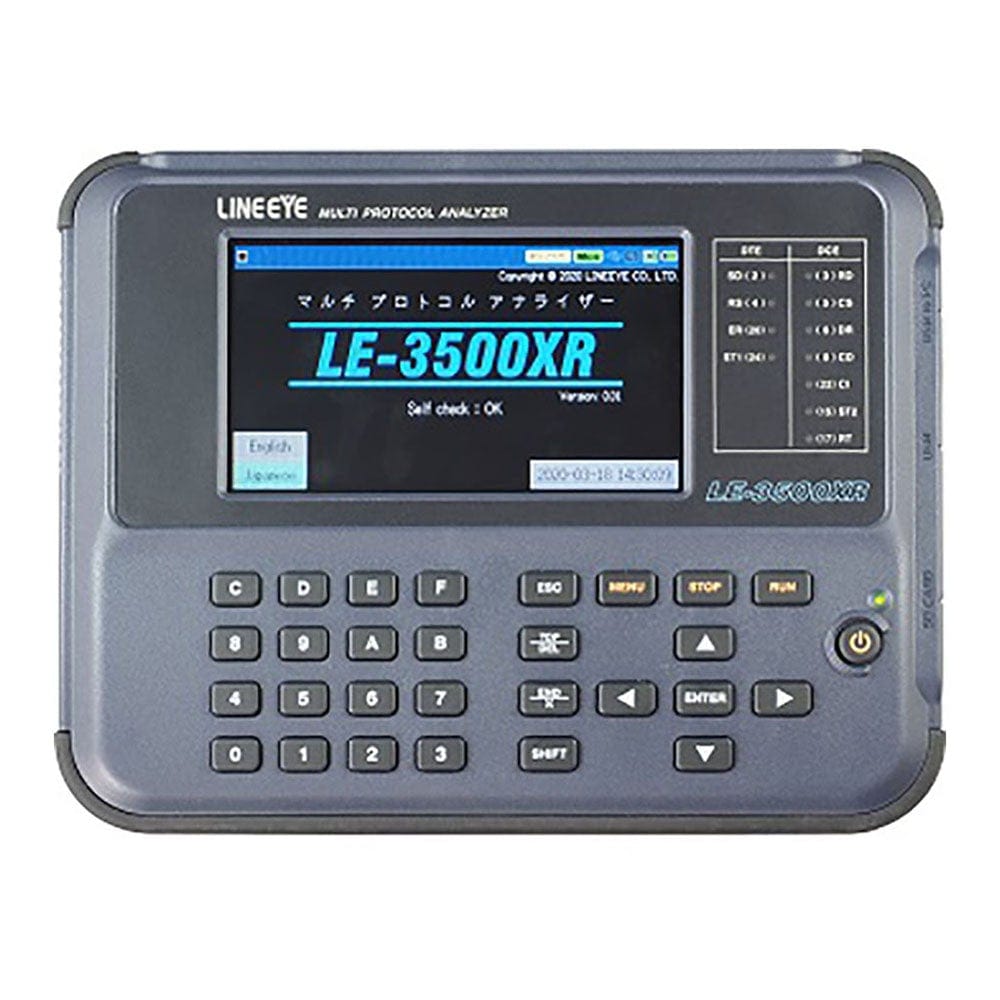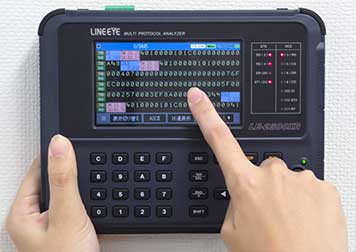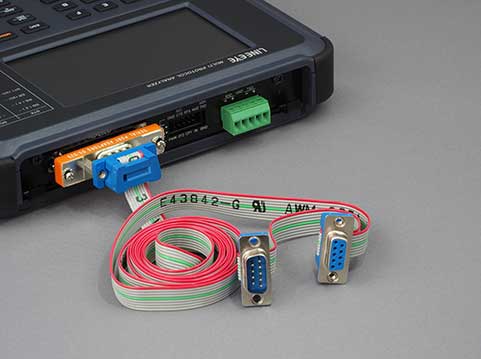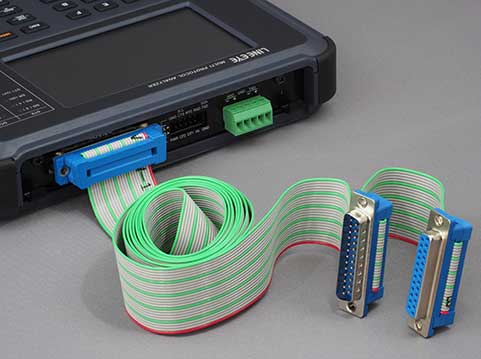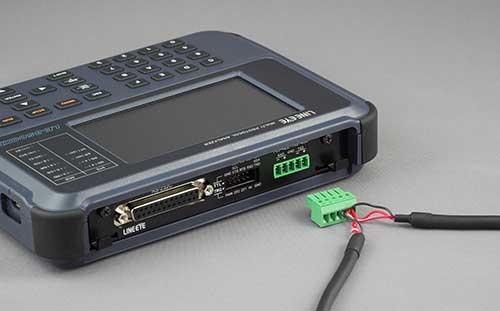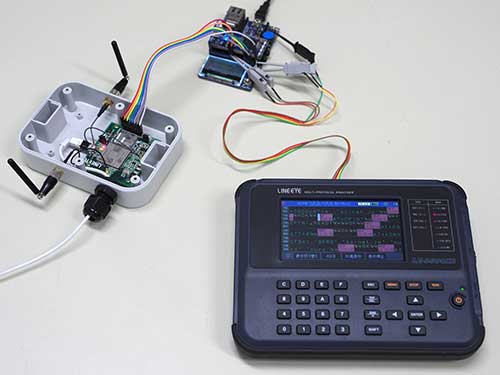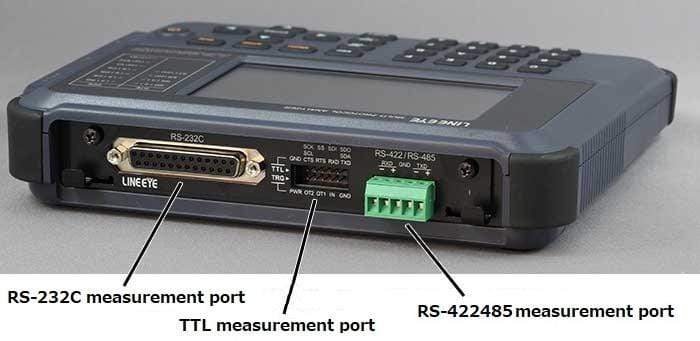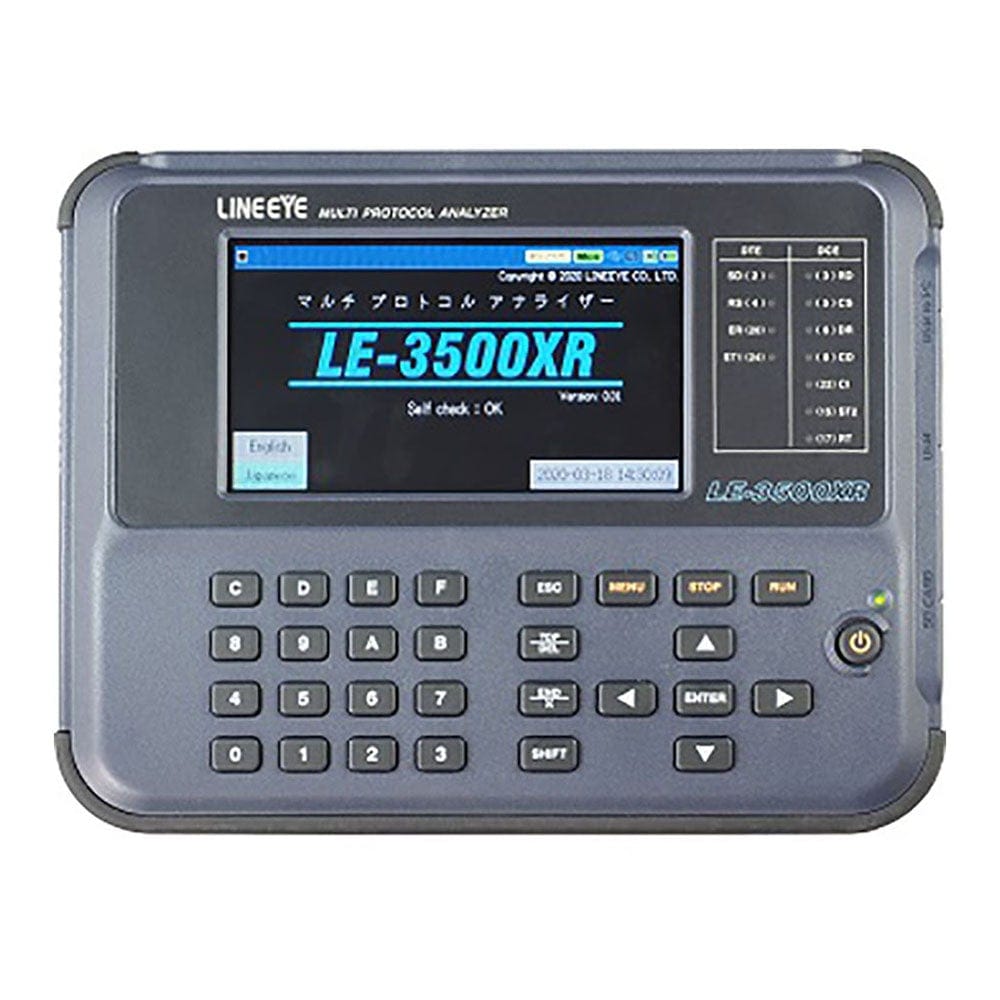
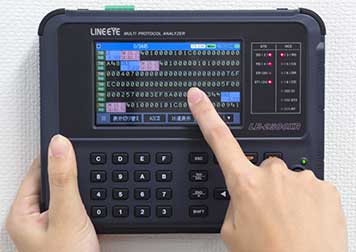
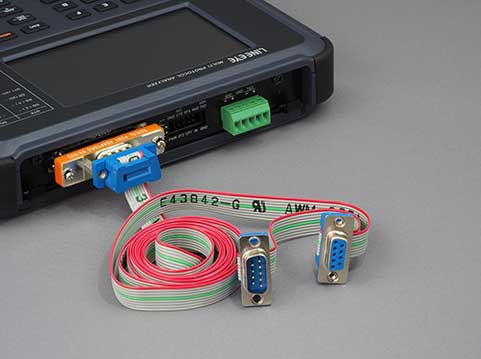
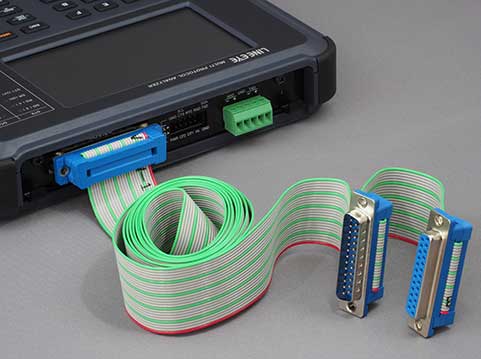
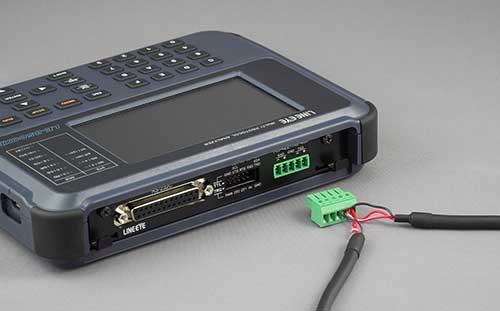
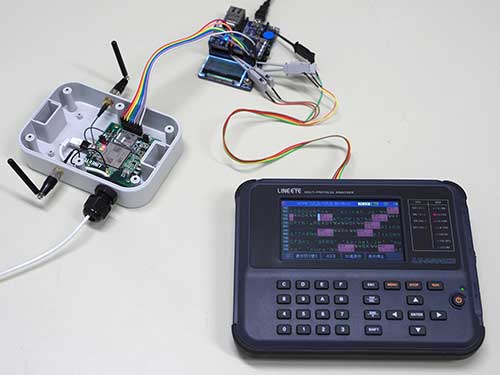
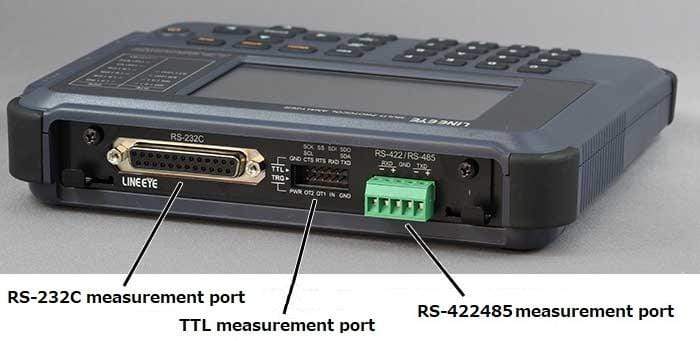
Key Features
Overview
Overview
The Lineeye LE-3500XR-E is a stand-alone, battery-powered multi-protocol serial analyser for RS-232C, RS-422/RS-485 and TTL-level UART. It combines online monitoring, protocol translation, simulation modes and bit-error-rate testing in a compact handheld unit with a colour touch screen and hard keys. Data can be logged continuously to SD card or USB storage with 10 ms time-stamping, supporting long-duration troubleshooting in the field.
Expand As Requirements Grow
Optional boards extend capability to in-vehicle and legacy interfaces. Add CAN, CAN FD and CXPI with the OP-SB7XC or CAN/LIN with the OP-SB7XL. RS-530 and other datacom standards are enabled by the OP-SB10N. High-speed testing on supported links is available via the OP-FW10XR firmware. For board-level probing, the LE-5LS TTL cable provides convenient access.
Series & Compatible Models
The LE-3500XR-E sits above the LE-2500XR-E and alongside the newer LE-3500XR(V2) models. For USB protocol work, consider the LE-650H2-A USB 2.0 analyser as a complementary tool.
Why Consider This Instrument?
Unlike PC-tethered analysers, the LE-3500XR-E captures, decodes and simulates traffic without a laptop, reducing setup time on the factory floor or at customer sites. Its rugged I/O, protocol options and reliable long-term logging make it a practical choice for engineers maintaining Modbus and other serial systems.
Why Engineers Choose The Lineeye LE-3500XR-E Multiprotokoll-Analysator
Field-Ready & Efficient
Robust Logging
Expandable Platform
Der Lineeye LE-3500XR-E ist ein perfektes Modell eines eigenständigen Kommunikationsprotokollanalysators , der über ein Farb-Touchpanel und einen Lithium-Ionen-Akku verfügt und gleichzeitig alle Funktionen des herkömmlichen Modells LE-3500/LE-3500R übernimmt, das über die für den Kommunikationsanalysetest erforderliche Überwachungsfunktion, Simulationsfunktion und Bitfehlerraten-Testfunktion verfügt.
Die Visualisierung von Signalstatus und Fehlerdaten auf dem Leitungsmonitor-Display wird durch die Farbgebung des Displays erheblich verbessert. Mit dem Touchpanel und dem physischen Tastenschalter können Sie deren Nutzung optimieren – zum Beispiel durch Wischen auf dem Touchscreen zur Anzeige einer großen Menge an Kommunikationsmonitordaten und Tastenbedienung für den MANUELLEN Simulationsmodus (in dem den Tasten Kommunikationstestdaten zugewiesen werden und ein Übertragungs-/Empfangstest ausgeführt wird). Darüber hinaus werden viele Tastenbedienungen des herkömmlichen Modells als Tastenkombinationen übernommen.
Das neu gestaltete Gehäuse mit integriertem Lithium-Ionen-Akku (der über den Micro-USB-Anschluss aufgeladen werden kann) ist deutlich kleiner und leichter als das herkömmliche Modell und reduziert den Aufwand für die Wartung von Kommunikationsgeräten und die Fehlerbehebung bei Kommunikationssystemen.
| General Information | |
|---|---|
Part Number (SKU) |
LE-3500XR-E
|
Manufacturer |
|
| Physical and Mechanical | |
Weight |
5.0 kg
|
| Other | |
Warranty |
|
Country of Origin |
|
HS Code Customs Tariff code
|
|
EAN |
5055383628841
|
Frequently Asked Questions
Have a Question?
-
Where can I add high-speed test capability?
Purchase the optional high-speed firmware package for the LE-3500XR-E to unlock enhanced measurement conditions and extended maximum speeds when appropriate.
-
Is there an upgrade path to newer models?
Yes. LE-3500XR(V2) adds refinements such as a USB Type-C device port and accessory compatibility, preserving your workflow and captured data.
-
Can I probe board-level UART easily?
Yes. A simple TTL probe lead connects to the analyser’s TTL port, letting you observe 3.3/5-volt UART signals safely and conveniently.
-
Can it simulate devices as well as monitor?
Yes. Manual and buffered transmit modes generate scripted frames, while BERT verifies link quality, expediting commissioning and fault isolation on site.
-
How does this compare to high-end, PC-based analysers?
Unlike premium PC-based solutions requiring probes, drivers and laptops, the LE-3500XR-E is field-ready, stand-alone, faster to deploy, and battery powered.
-
What’s the practical maximum speed?
With the optional high-speed firmware and applicable half-duplex conditions, the analyser measures serial links up to approximately 3.15 megabits per second.
-
How do I capture very long sessions?
Use AUTO SAVE to continuously record traffic to SD card or USB storage, timestamped, ideal for catching intermittent faults over days.
-
Is LIN also supported?
Yes. A LIN-capable expansion board adds LIN transceiver support and decoding, so the LE-3500XR-E can troubleshoot mixed CAN/LIN automotive networks efficiently.
-
Does it work without a PC?
Yes. LE-3500XR-E operates completely stand-alone with colour display, battery, storage and controls; optional Wi-Fi provides convenient remote viewing and transfers.
-
Can I add CAN, CAN-FD or CXPI later?
Yes. The platform accepts plug-in automotive bus expansions for CAN, CAN-FD and CXPI, enabling future projects without replacing your handheld analyser.

